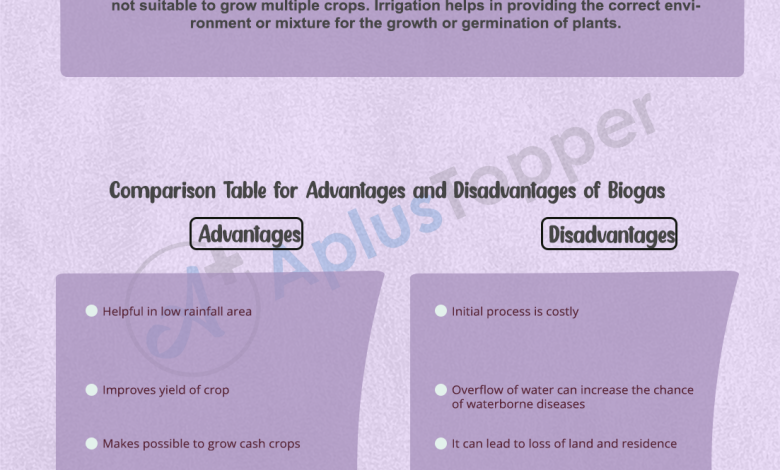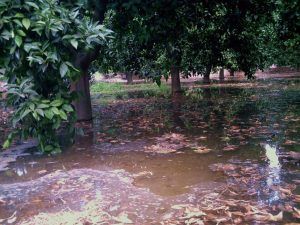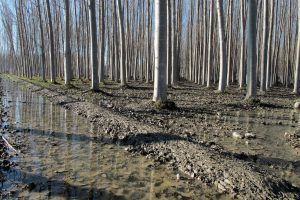Blanket Irrigation: [Concept, Advantages, Disadvantages and Crops]


Blanket irrigation is one of the oldest forms of crop irrigation in the world.In some cases it may be known as surface irrigation or flood irrigation.
To work it, the idea is that the land has a flat surface to avoid stagnation because the water must be applied in large quantities.
This theme has a lot of fabric to cut and that’s exactly what we’ll be working on here, so grab a pen and paper and jot down what you need. We start now.
What is blanket irrigation?

Blanket irrigation is established with the aim of carrying irrigation water throughout the land using the filtering of the land as a premise.
In general, the water is spread on a flat terrain with a certain slope so that it circulates thanks to the force of gravity.
As the water covers the extensions of land, it filters into the earth, which decreases the amount of water from the beginning to the end of the cycle to a certain level.
There are certain types of crops in which blanket irrigation is the only option to make them bear fruit, for example rice. Although still used in many parts of the world, blanket irrigation is being supplanted by more efficient irrigation methods.
This efficiency is oriented both to the proper use of water and to the ability to offer each type of crop the amount of liquid it needs.
What are the advantages of blanket irrigation?
Blanket irrigation has many benefits that have allowed it to remain one of the most widely used for years to the present. Among these benefits we have:
- It is an ideal method for large extensions of land because it achieves a rapid distribution of water.
- It does not require the use of complicated installations, so the initial investment is really low.
- It is almost impossible for problems to arise due to irrigation deficit.
- Since it does not touch the aerial parts of the plant, such as the leaves, flowers and fruits, there is little risk of diseases caused by high humidity.
What disadvantages does blanket irrigation have?
Blanket irrigation is a system that has gradually become obsolete for various reasons. The main one is that water is wasted a lot and that is why new proposals are being established to improve the spaces where it is used.
Below we present the main drawbacks that blanket irrigation entails:
- The use of water is not the most efficient that exists, so many liters can be lost in each application.
- On land that does not have a good drainage system, it can cause waterlogging that becomes harmful to almost all plant species.
- The points at which the dams will be established must be carefully projected so that all spaces receive the correct amount of water for their needs.
- You may be losing some of the soil’s nutrient levels because of the amount of water that seeps into each patch.
- It is not easy to program so that it has an almost autonomous operation as it is possible to establish in other irrigation systems.
What crops benefit from blanket irrigation?
The main crop that appreciates blanket irrigation is rice, since to prosper it needs the base of the plant to be in direct contact with water. This does not mean, of course, that the entire plant must be under water, which is why the blanket system is the most widely used.
To start it, the farmers establish a series of small dams throughout the entire extension of the land, which release the water at certain times.Other types of crops that can benefit from this type of irrigation are grass, alfalfa and some cereals.

Blanket irrigation continues to be implemented in many crops for different reasons. One of them is that modifications to more efficient systems have not been made due to lack of information or interest. However, it must be taken into account that the most important thing today is to make profitable use of resources, where water comes first.
Therefore, blanket irrigation is not one of the most efficient around this, so it is worth leaving it for crops that do need it, such as rice, and supplanting it in the rest. In the end, the important thing is to ensure that each type of crop receives the best care so that the harvests are in the best conditions.
Bibliographic references
- https://digital.csic.es/bitstream/10261/124690/1/Pardo_riego_prado_siega_SEEP1993.pdf
- https://riunet.upv.es/bitstream/handle/10251/107524/CASANOVES%20-%20Estudio%20del%20efecto%20del%20irrigation%20por%20drip%20en%20un%20campo%20de%20naranjos%20variety%20navelina %20comp….pdf?sequence=3
- https://dialnet.unirioja.es/descarga/articulo/905368.pdf
- http://citarea.cita-aragon.es/citarea/bitstream/10532/866/1/10532-105_1.pdf

![Photo of Jericho Flower: [Cultivation, Care, Pests and Diseases]](https://www.complete-gardening.com/wp-content/uploads/2022/08/jericho-flower-cultivation-care-pests-and-diseases-390x220.jpg)


![Photo of Hackberry: [Cultivation, Irrigation, Care, Pests and Diseases]](https://www.complete-gardening.com/wp-content/uploads/2022/08/hackberry-cultivation-irrigation-care-pests-and-diseases-350x220.jpg)